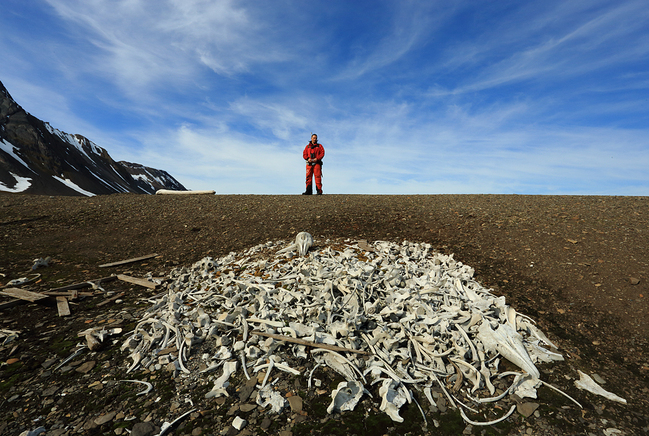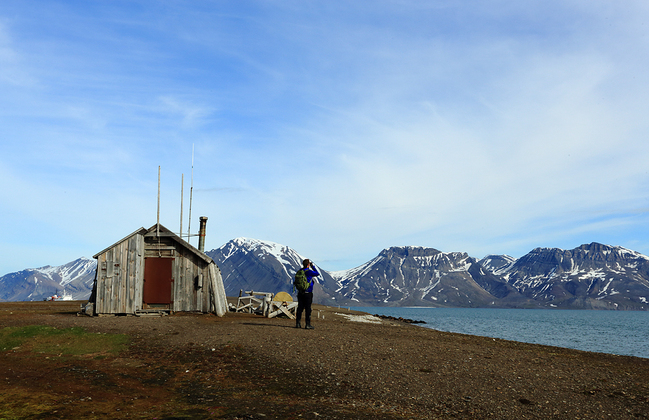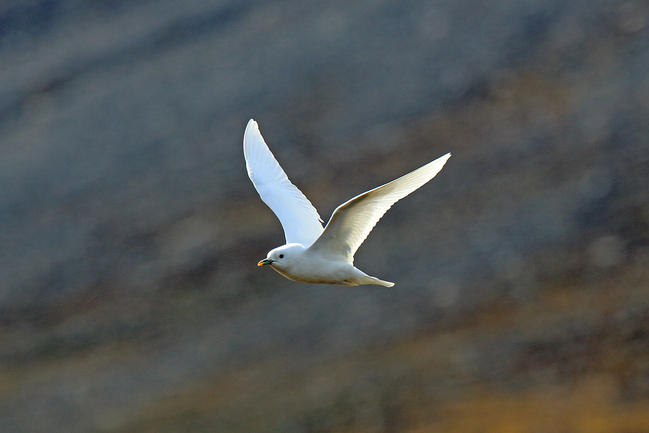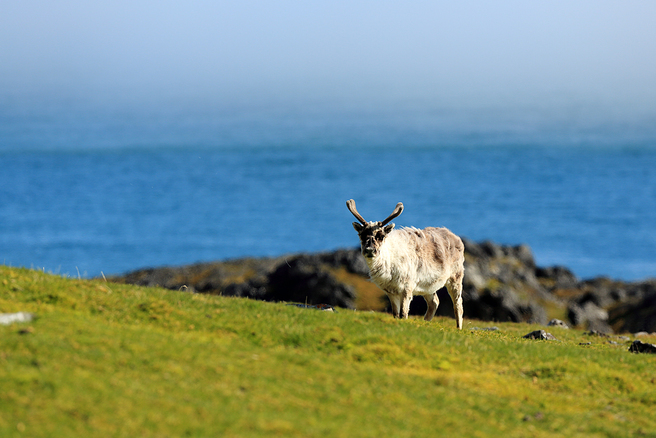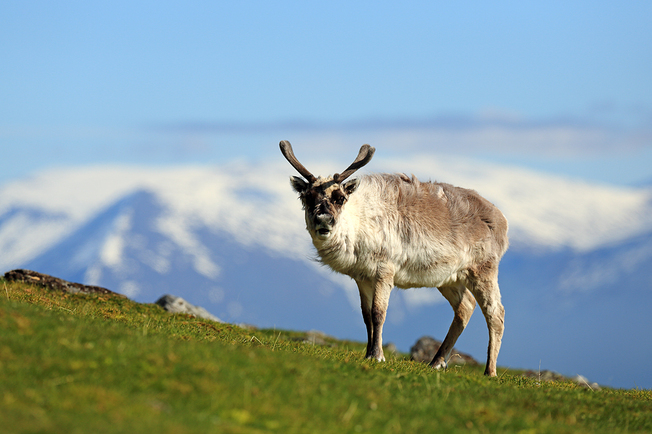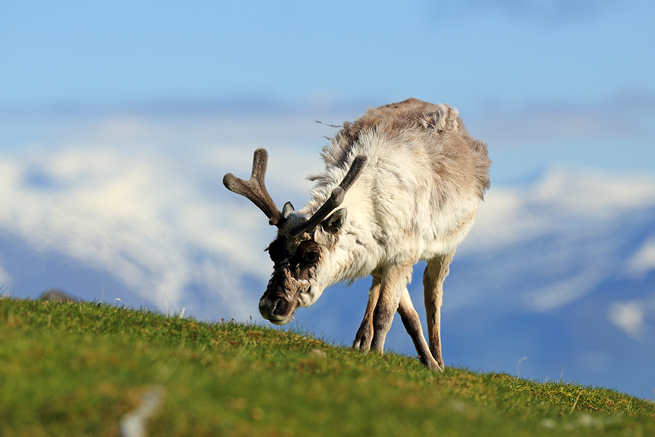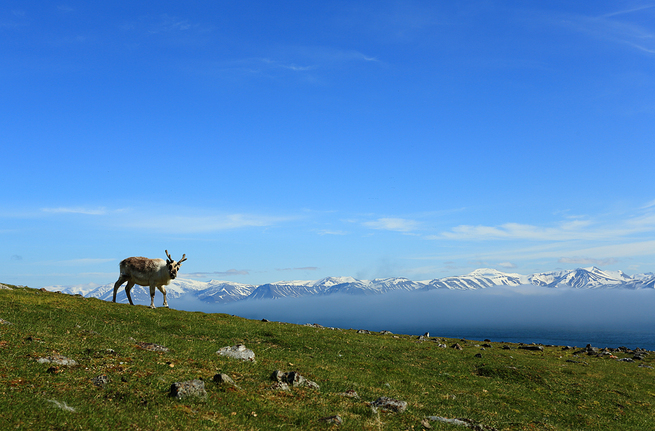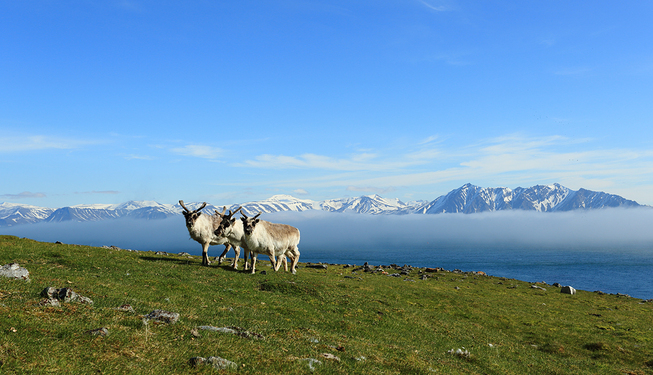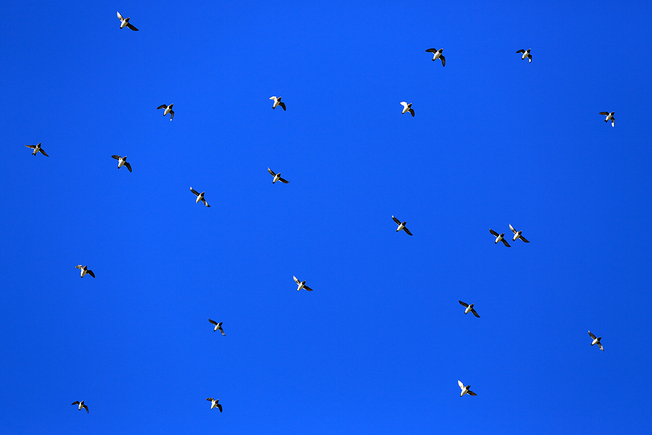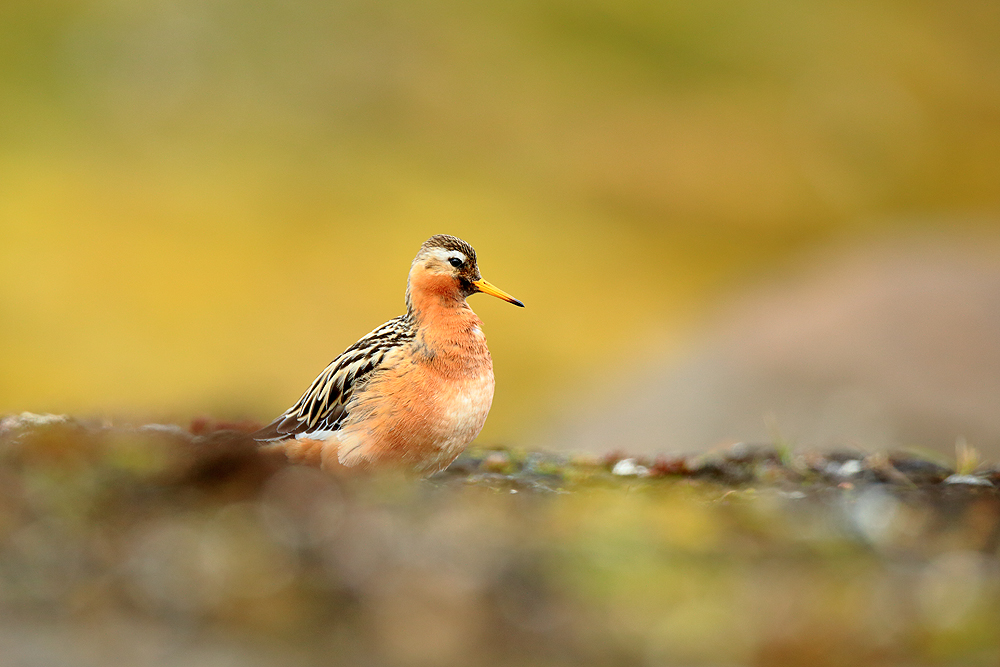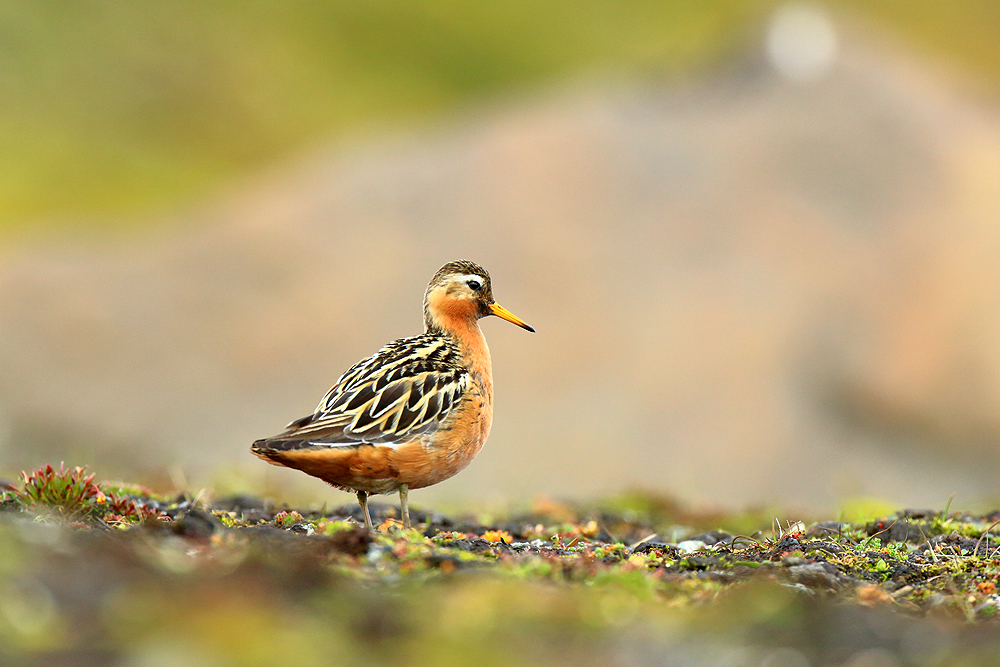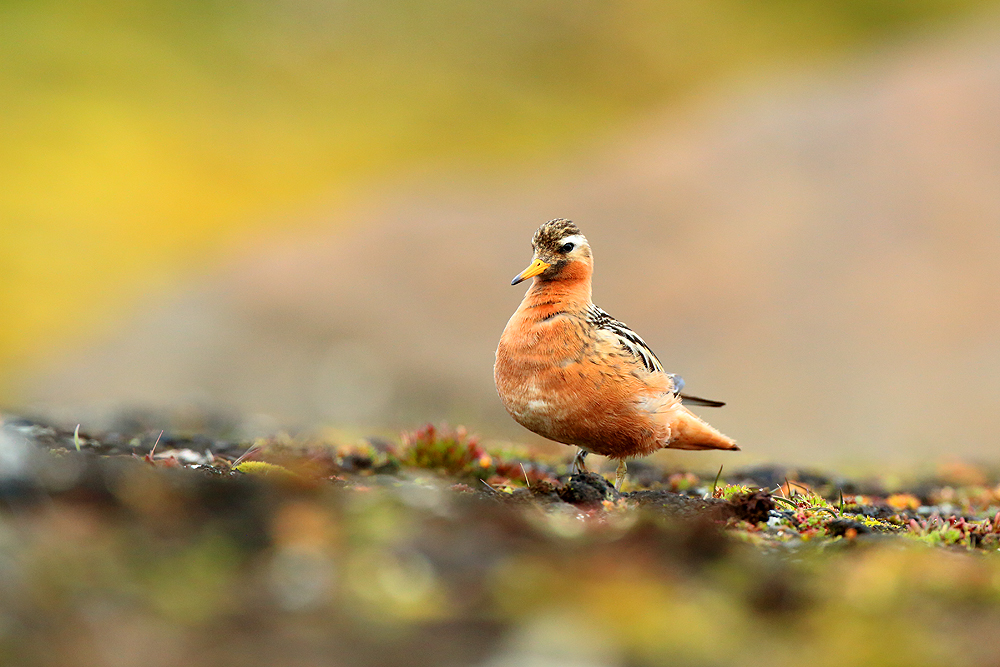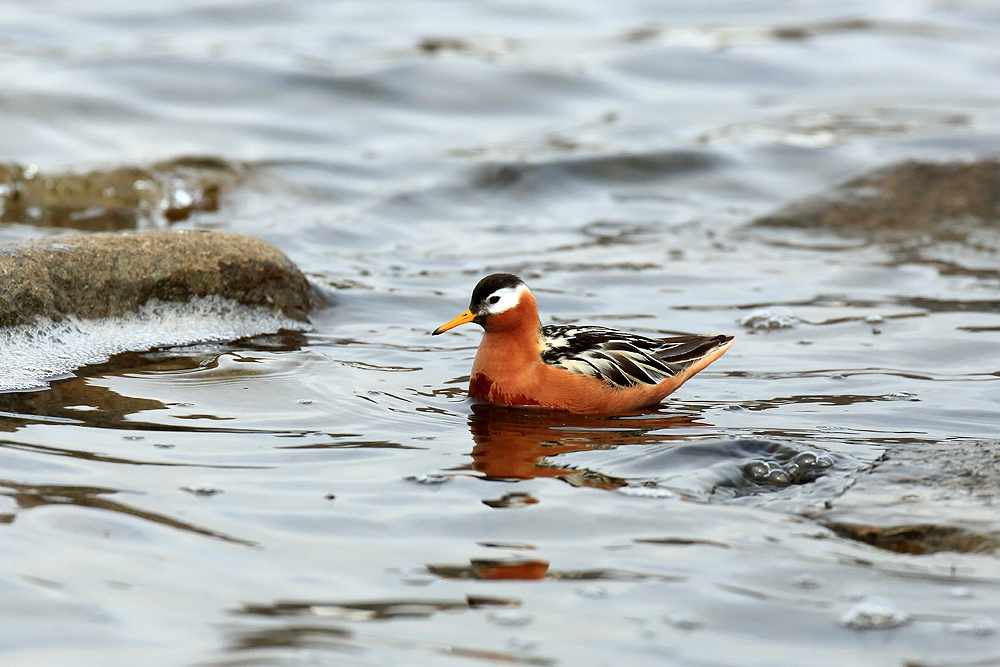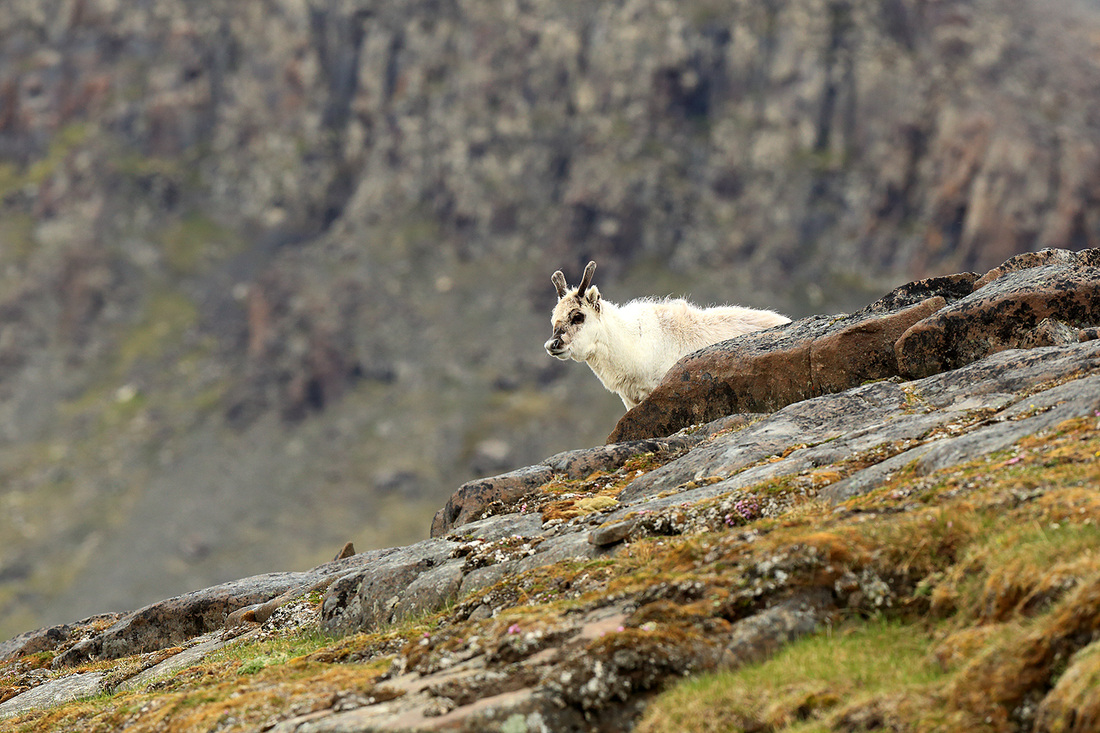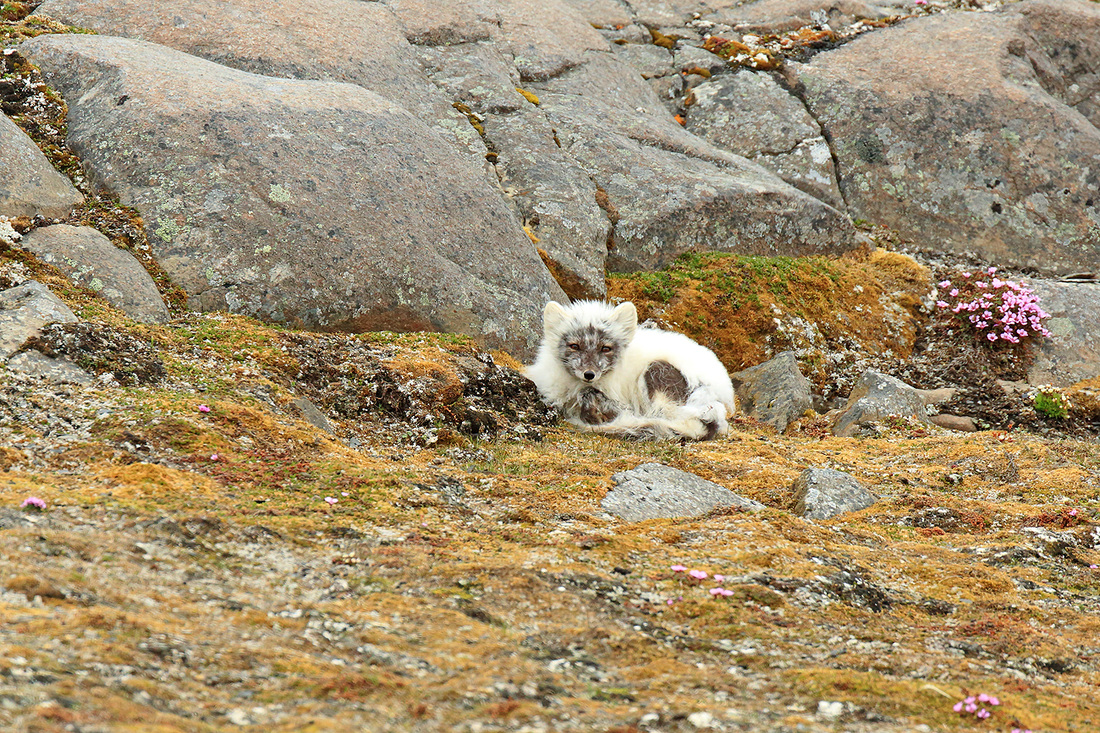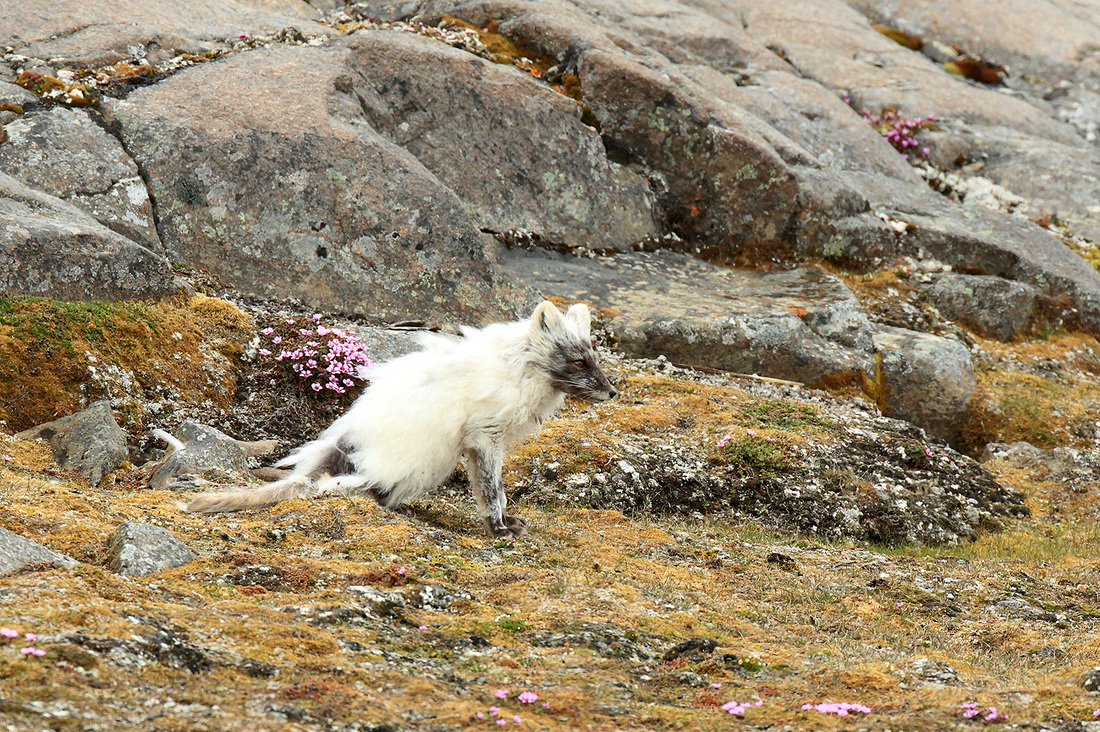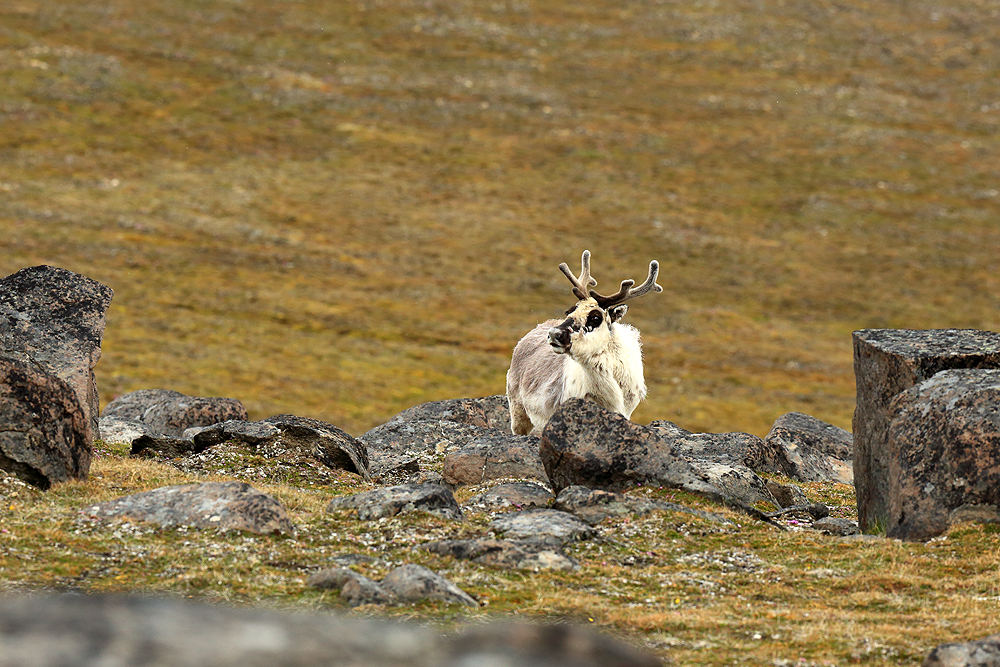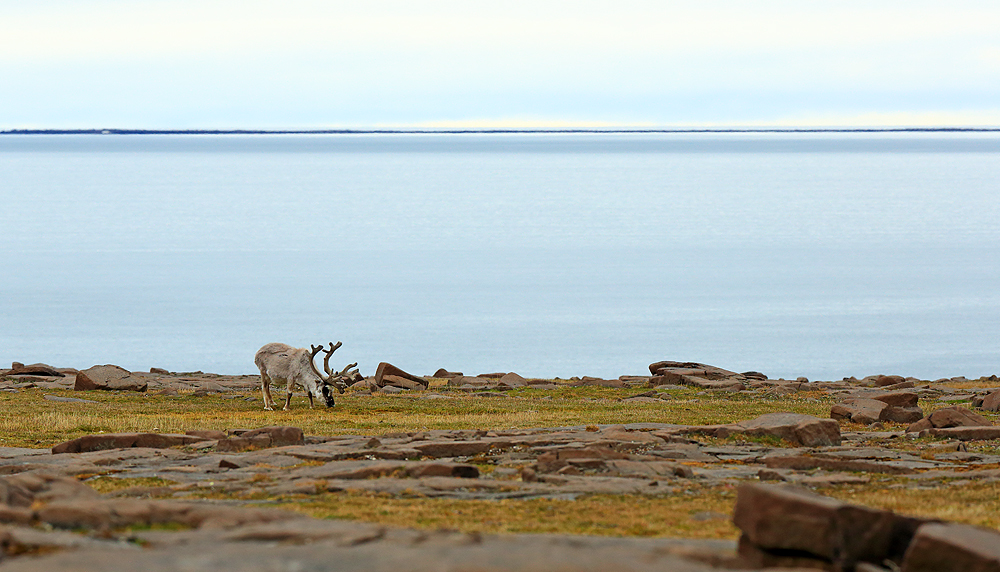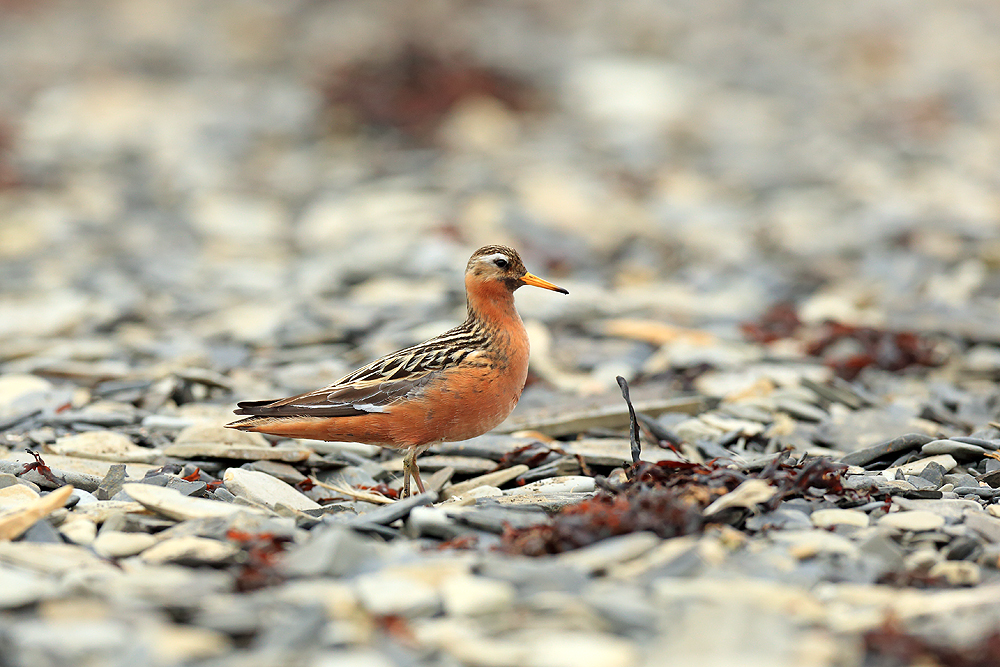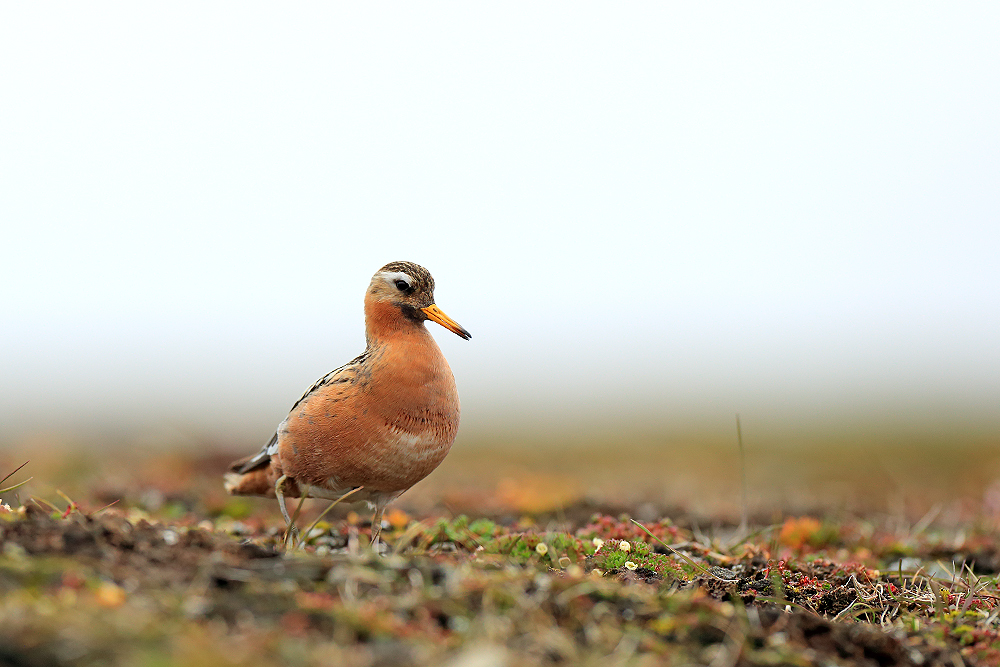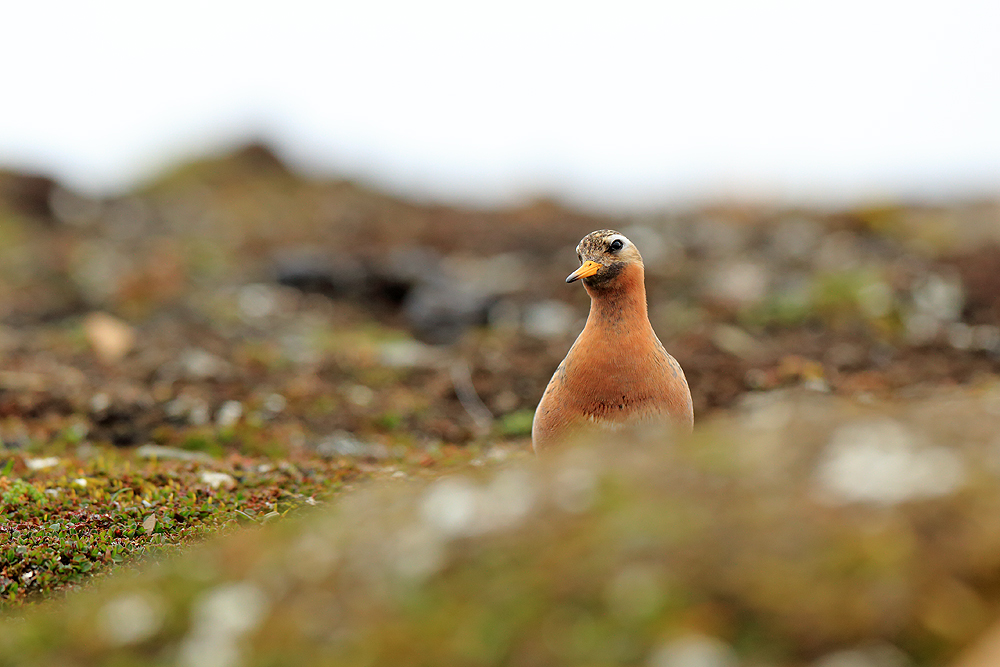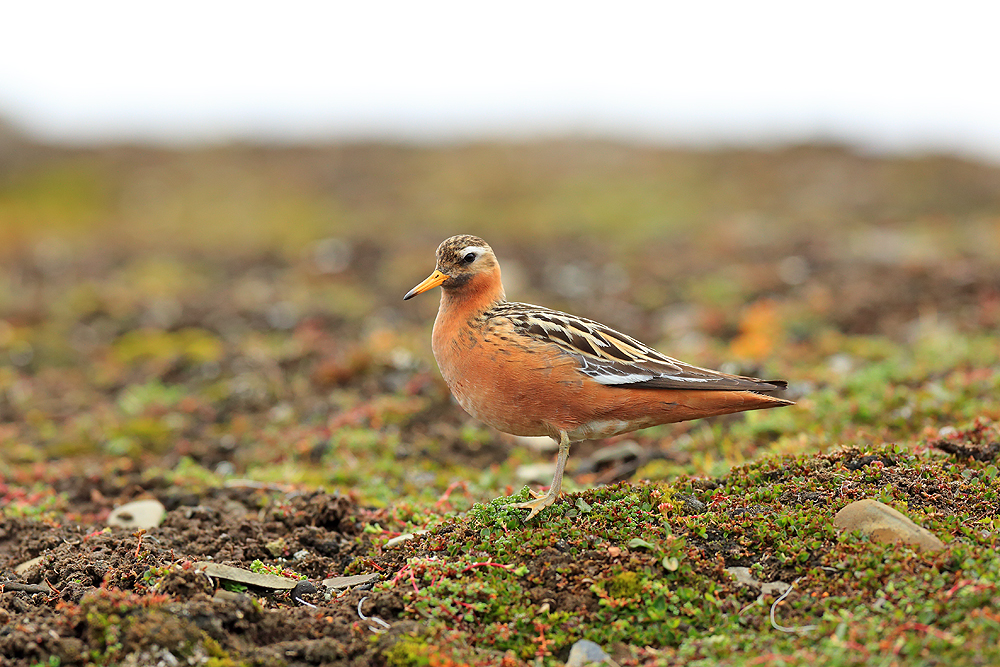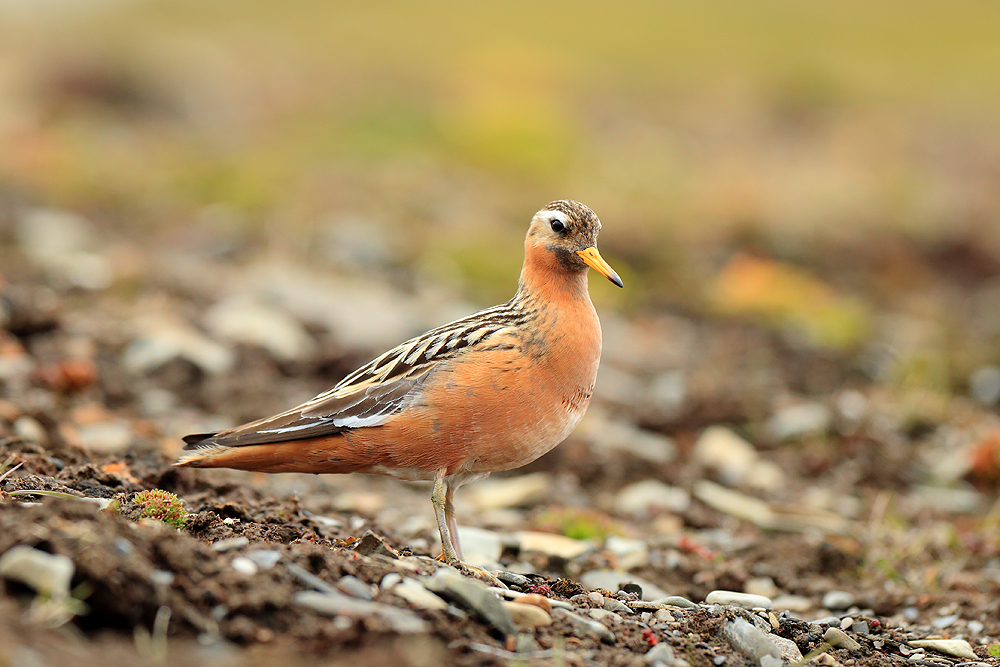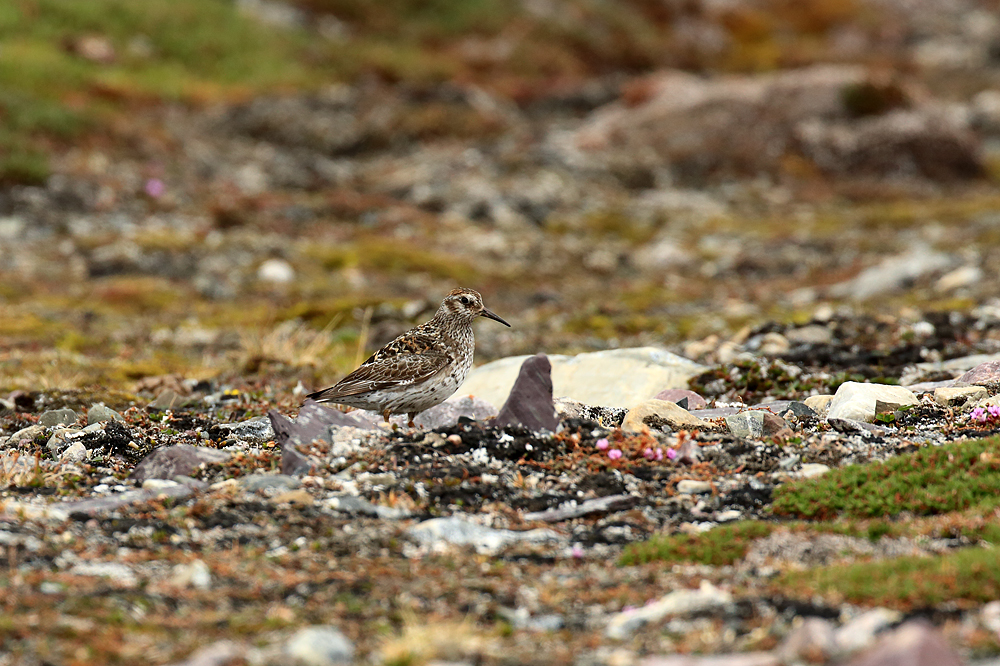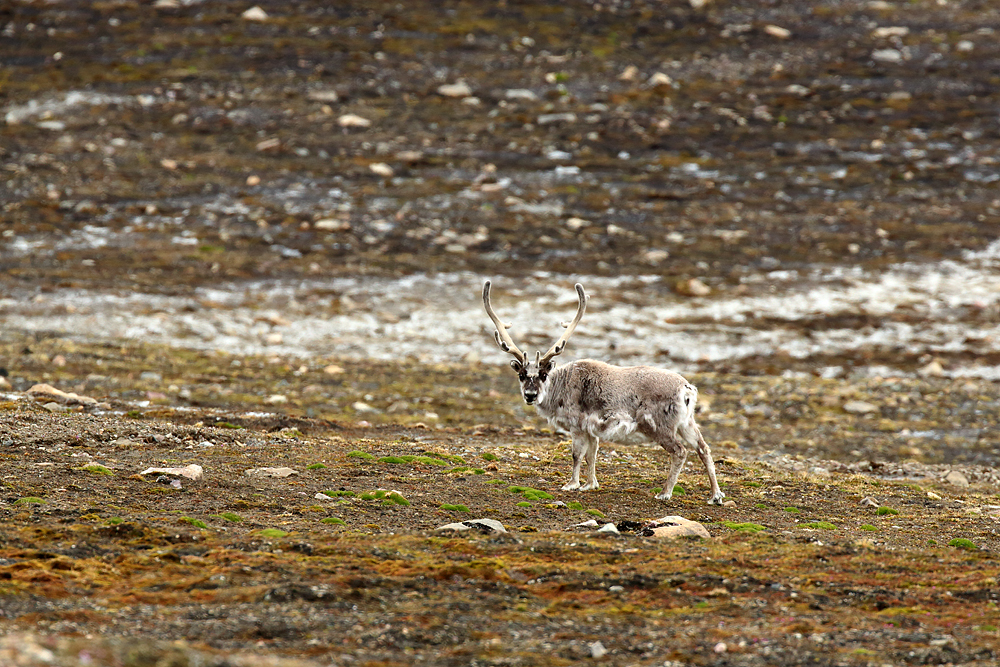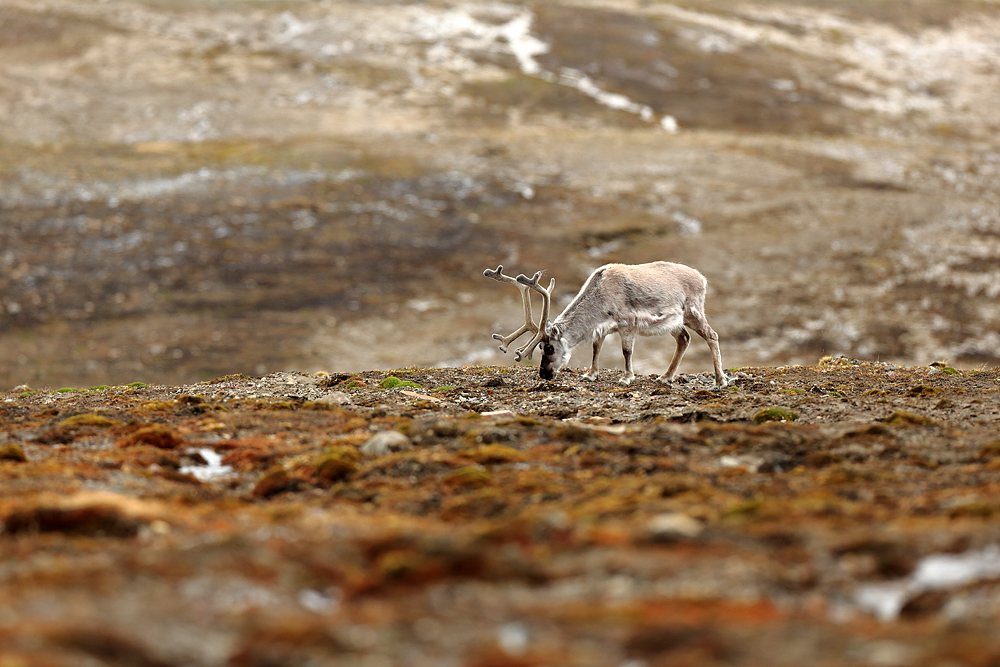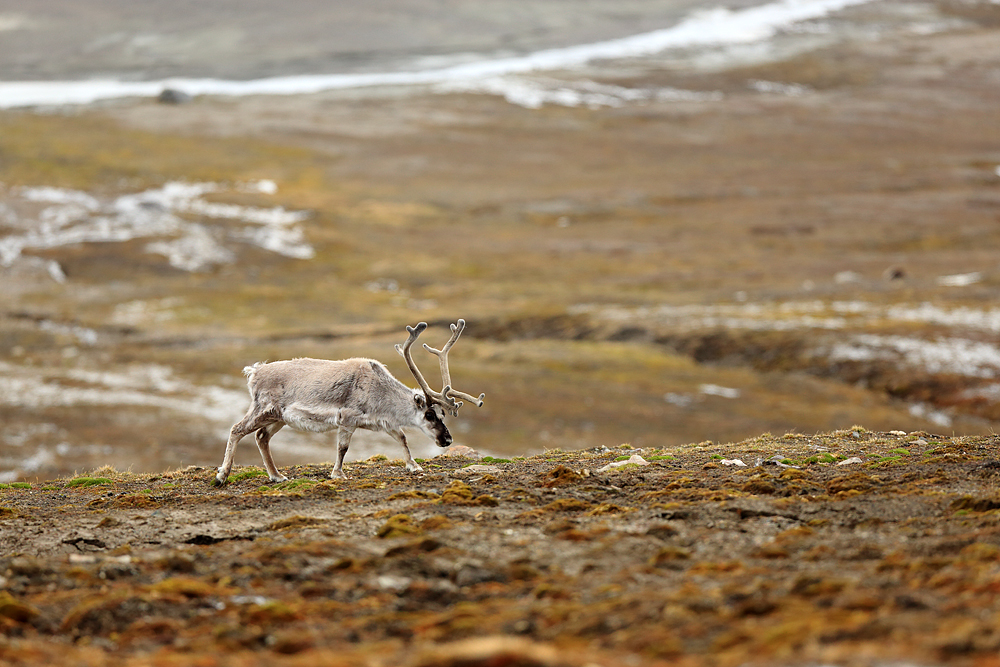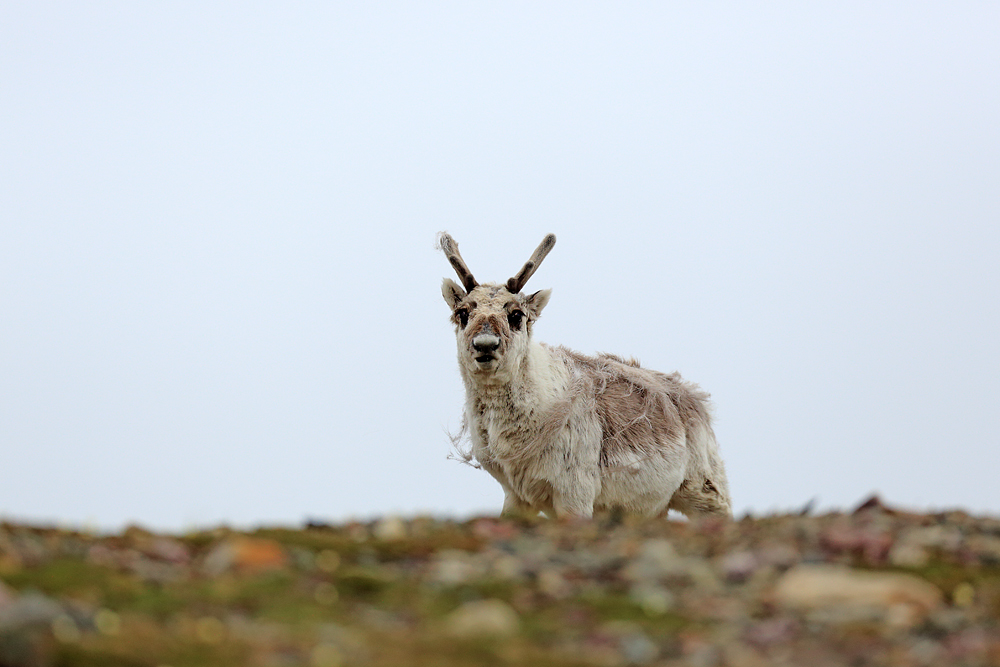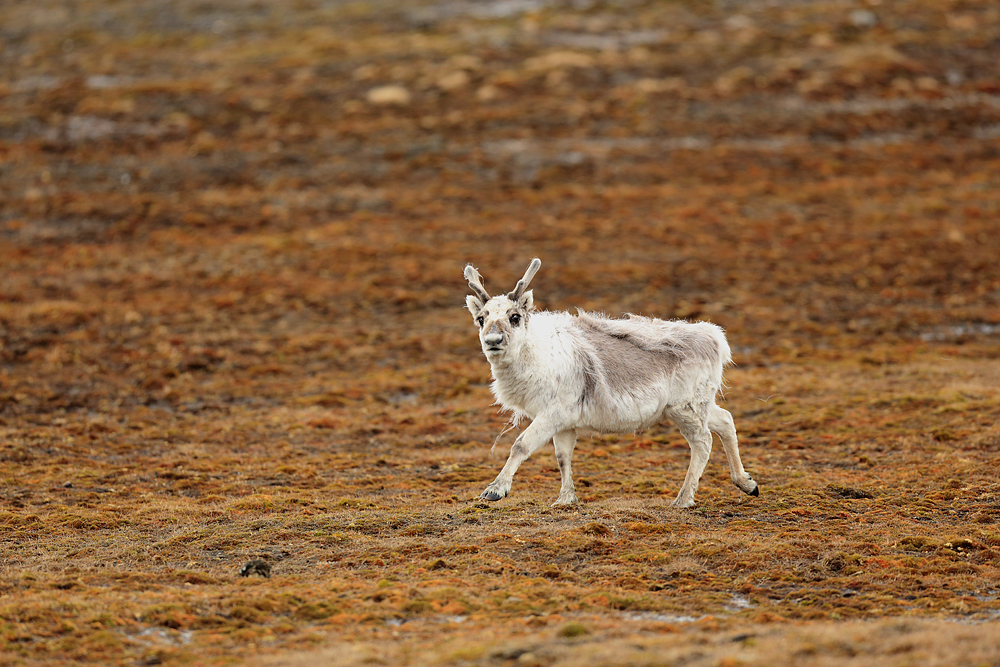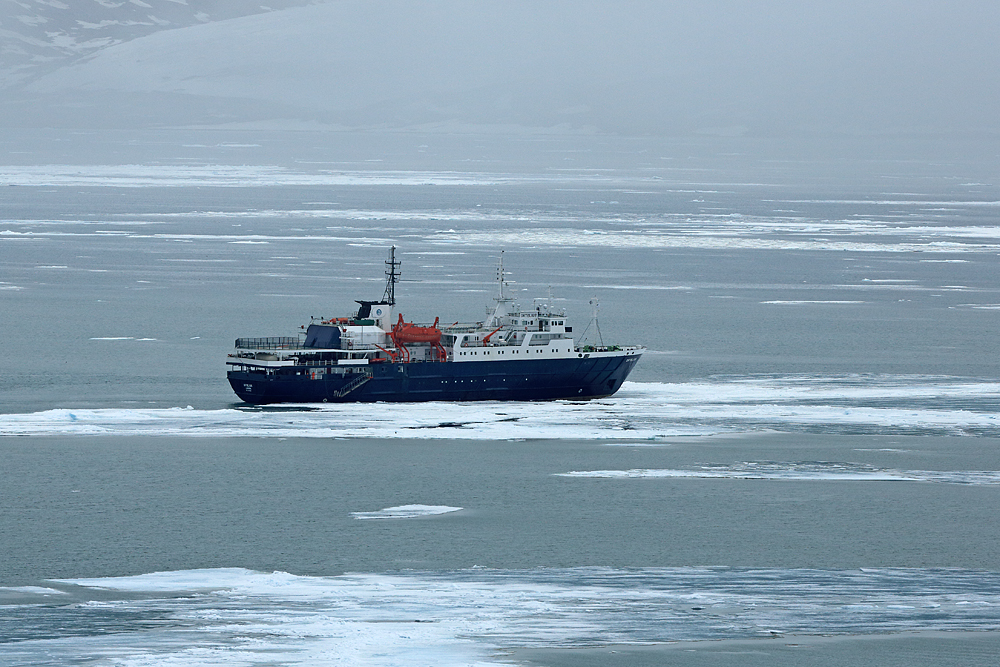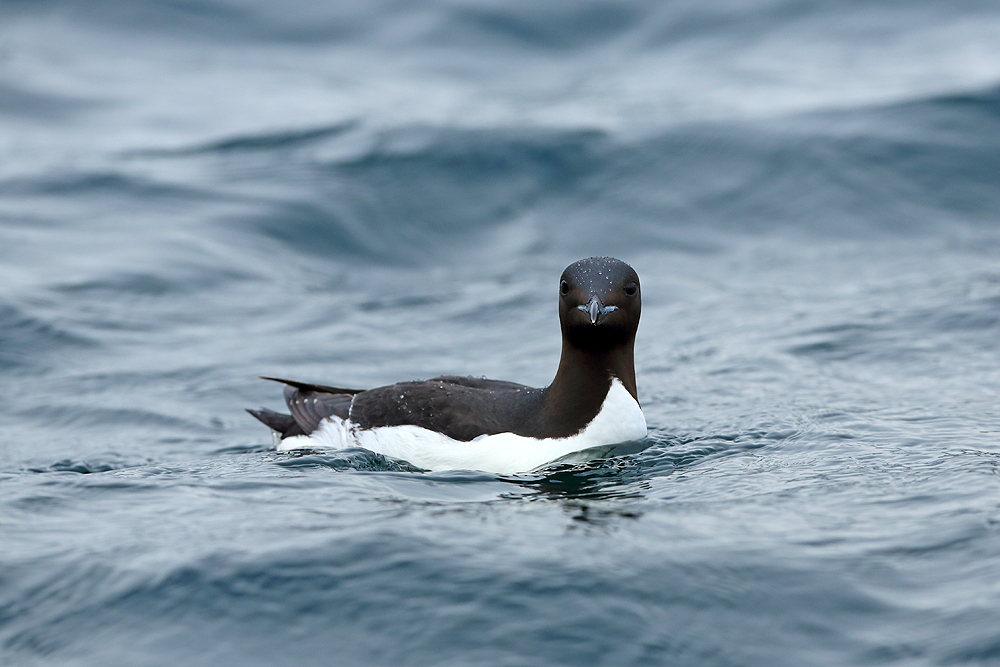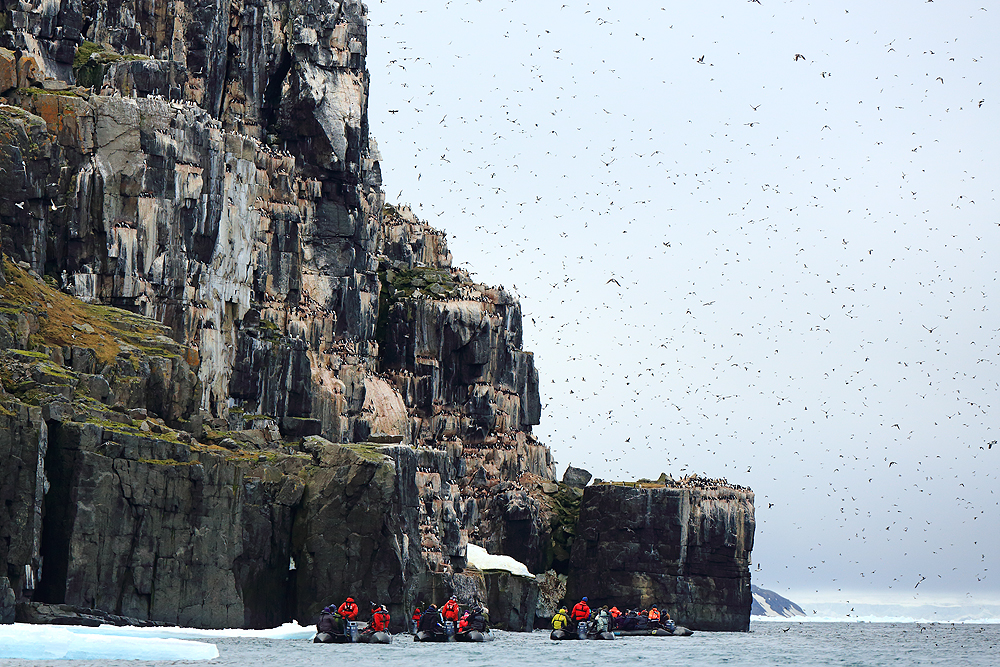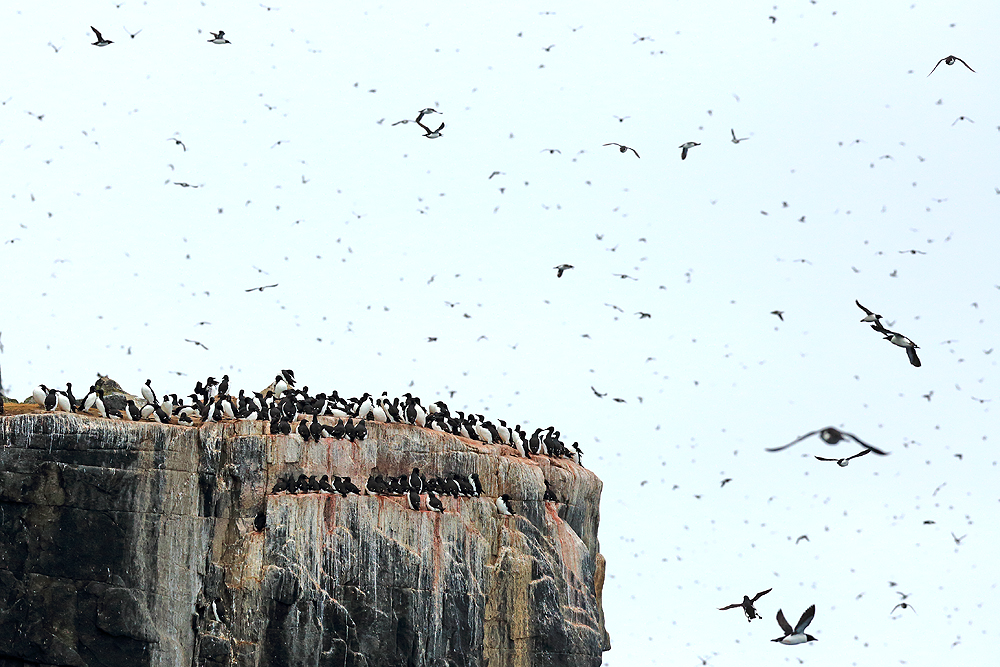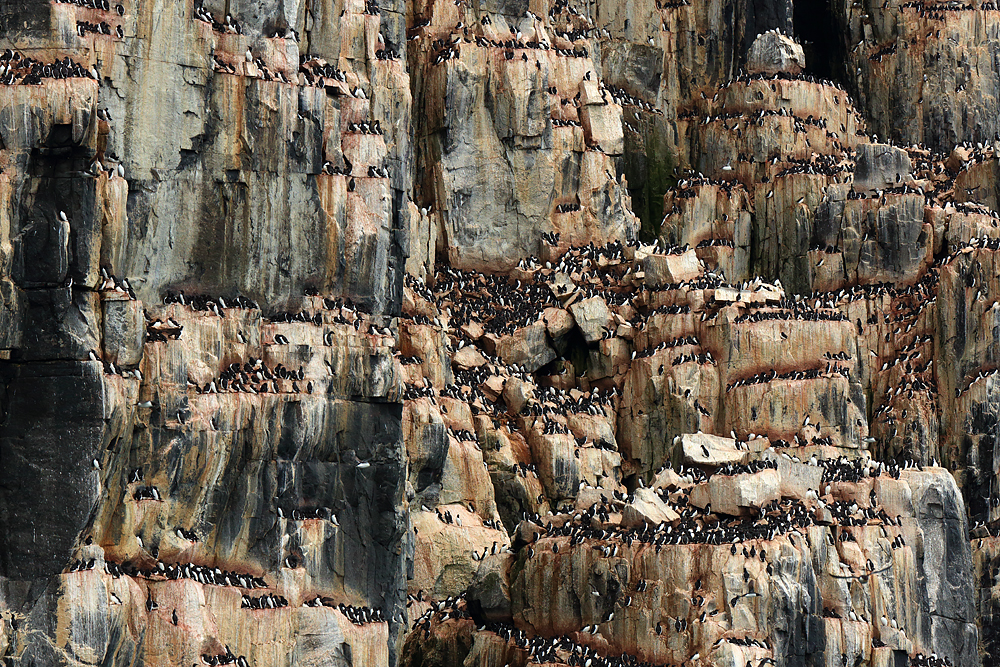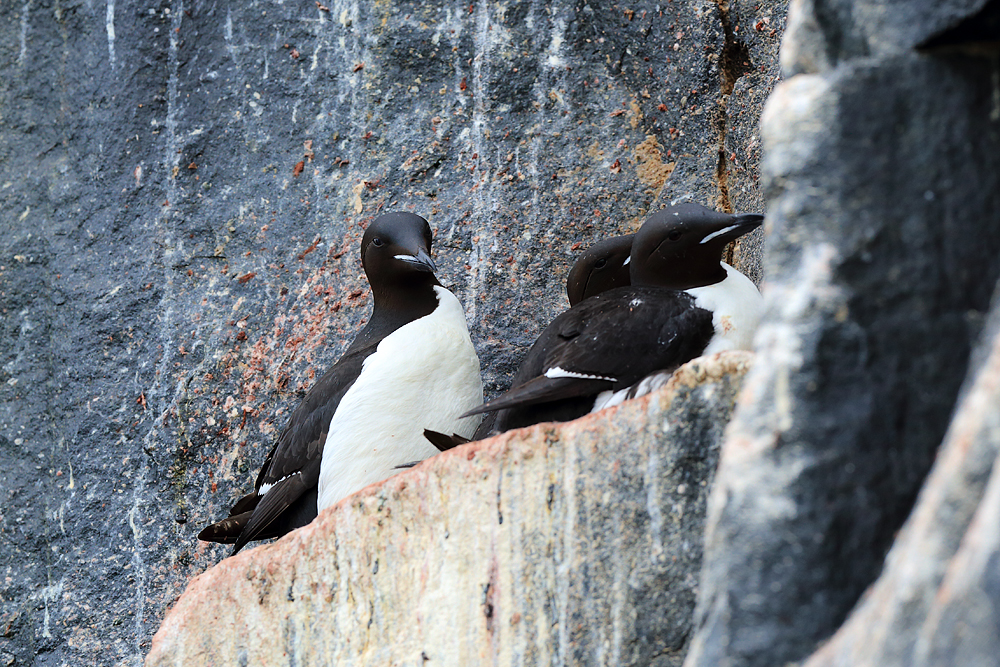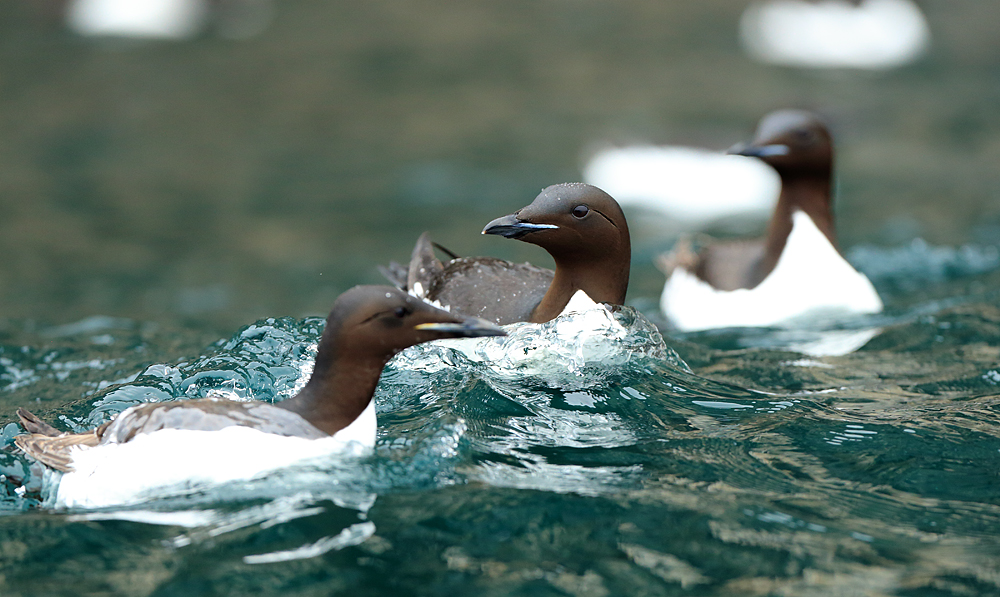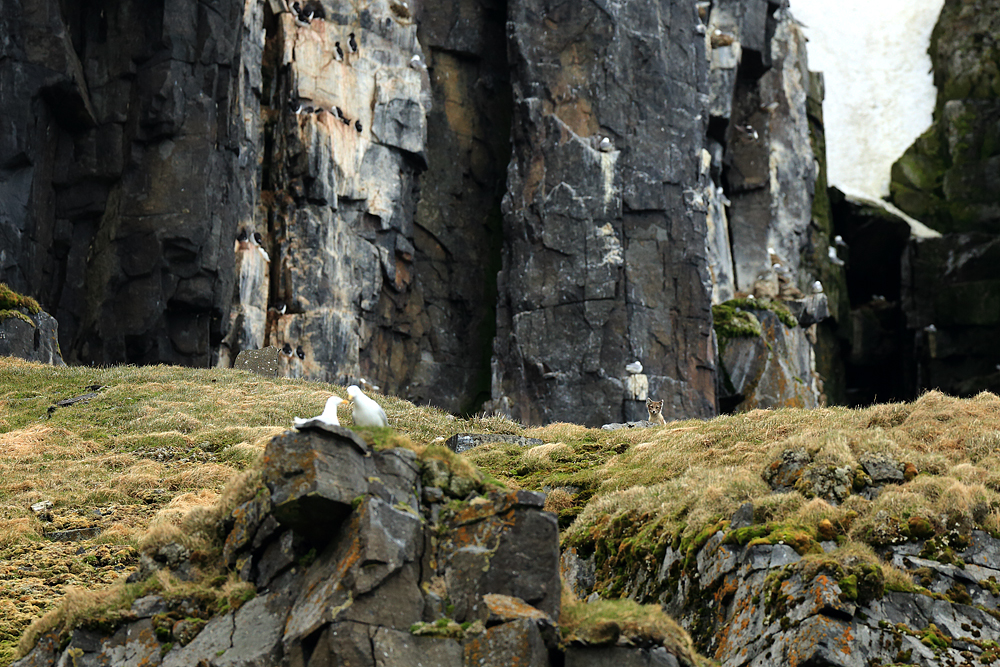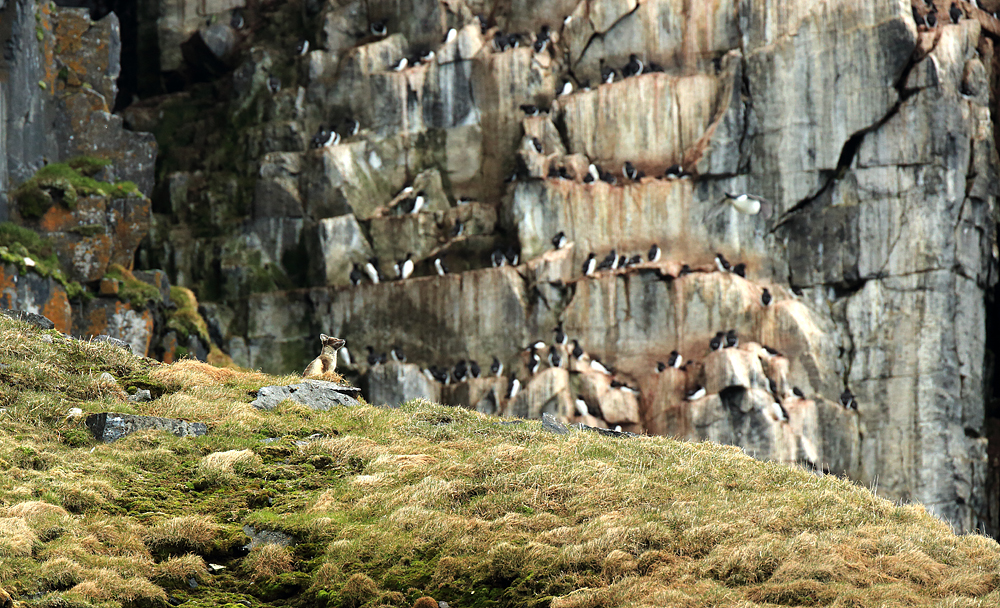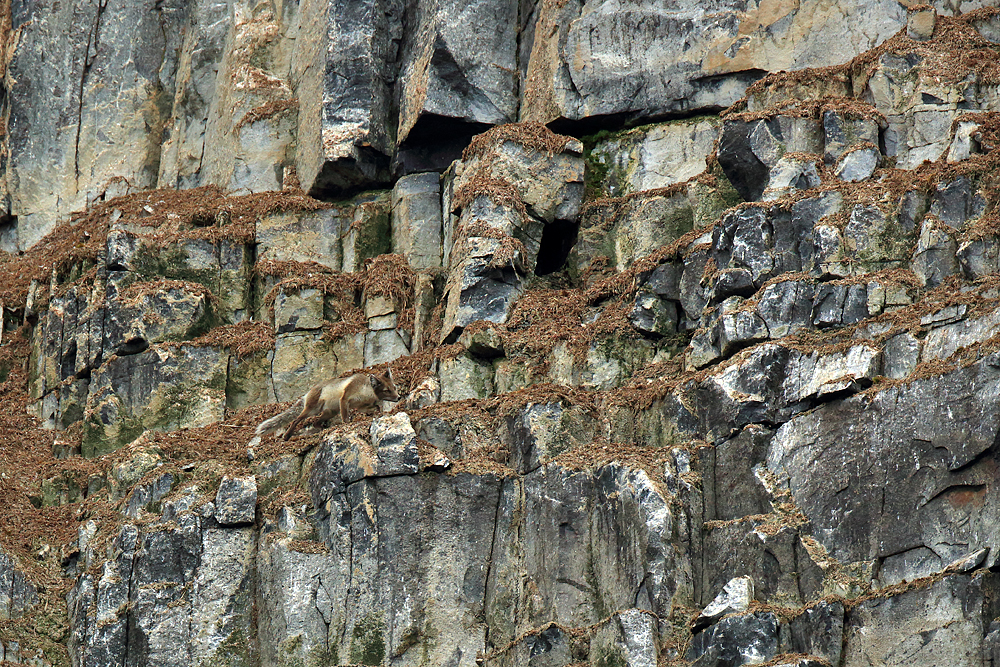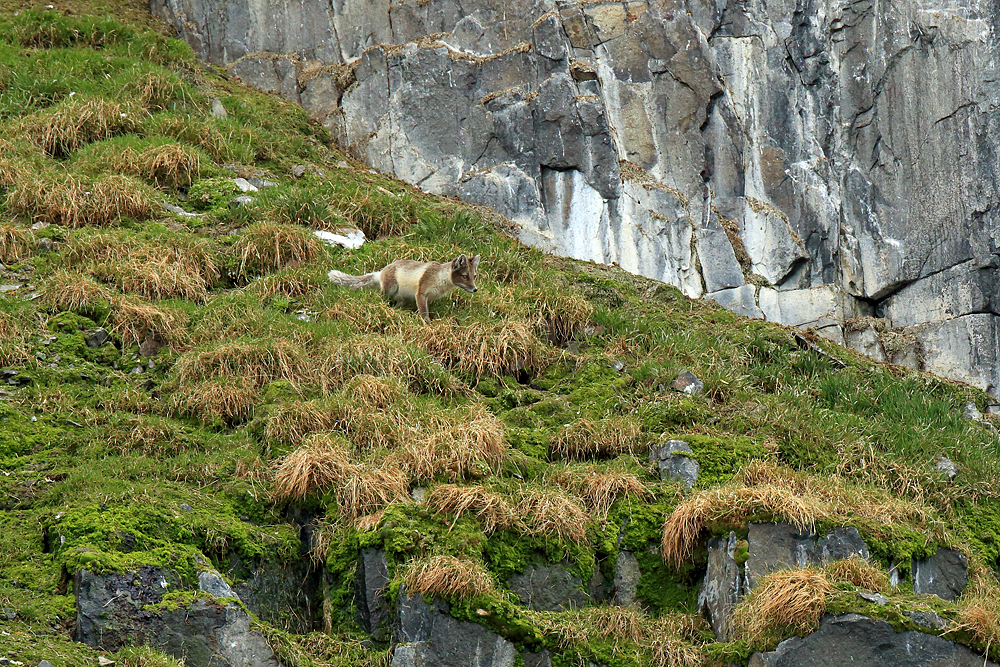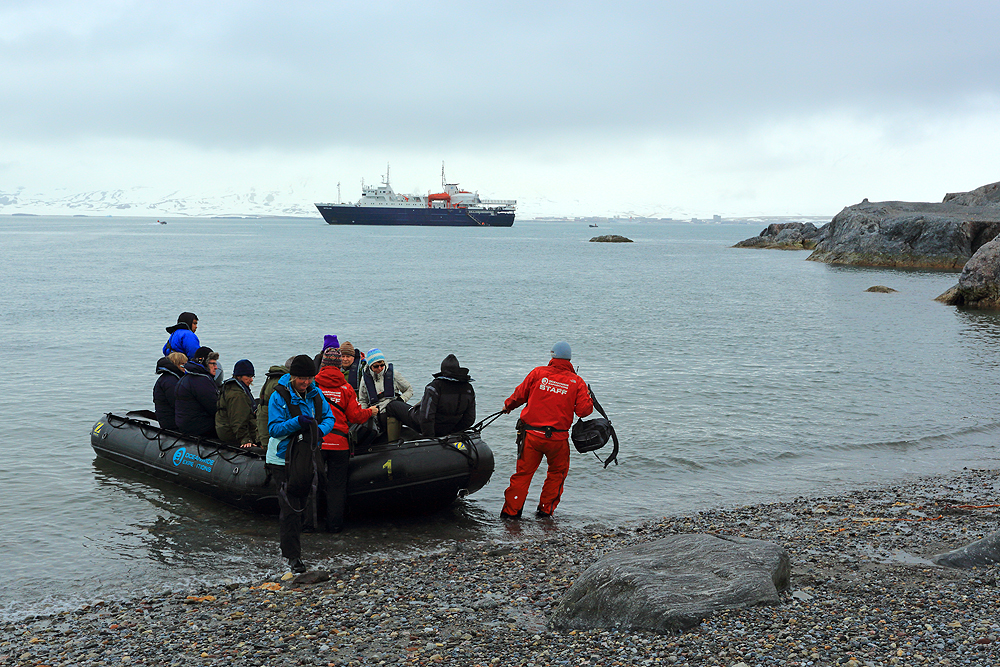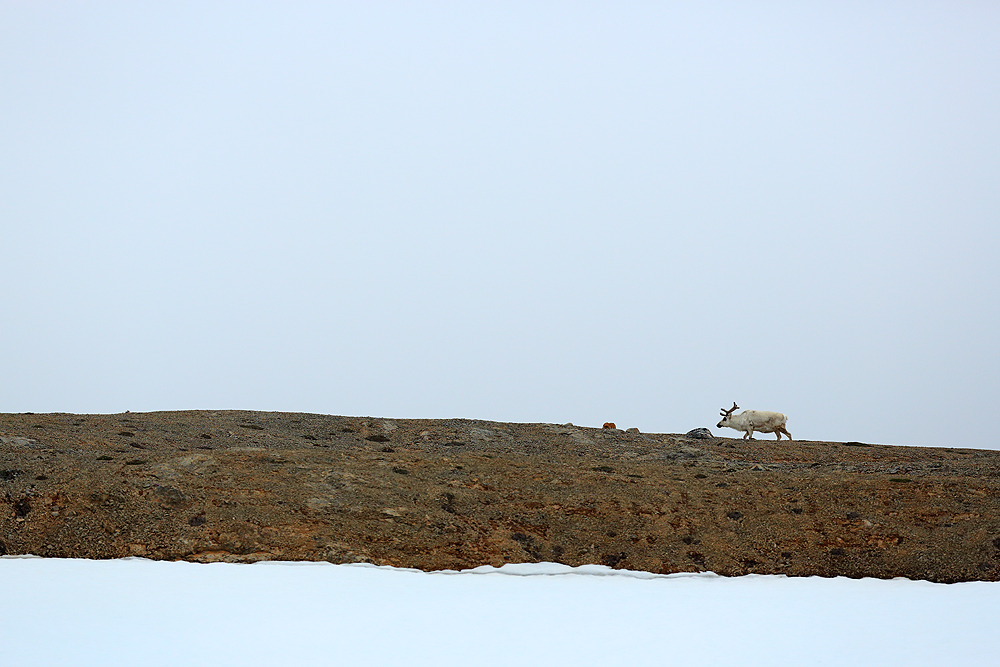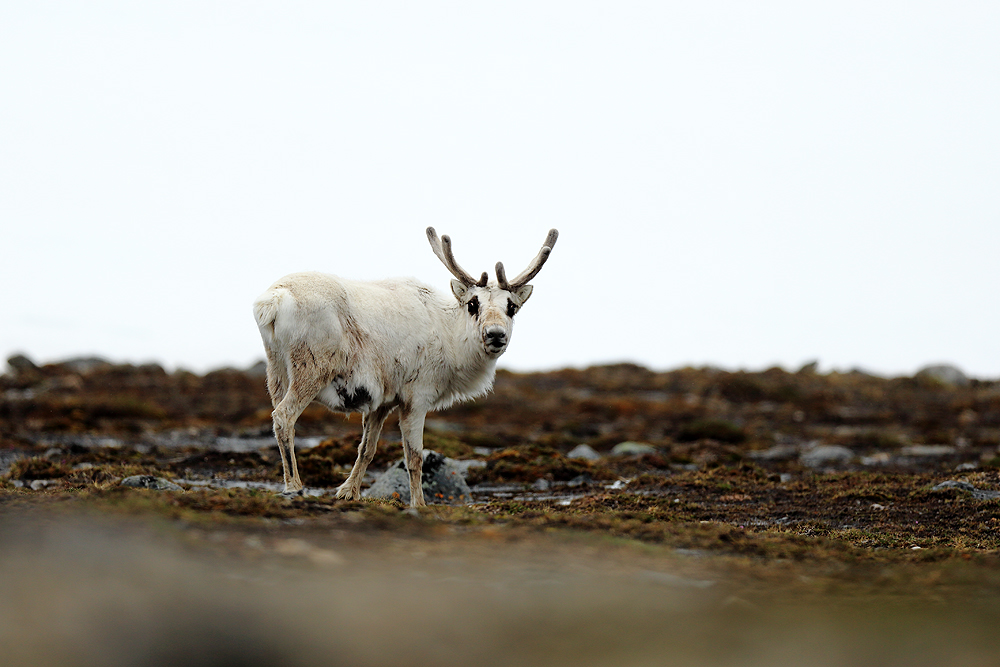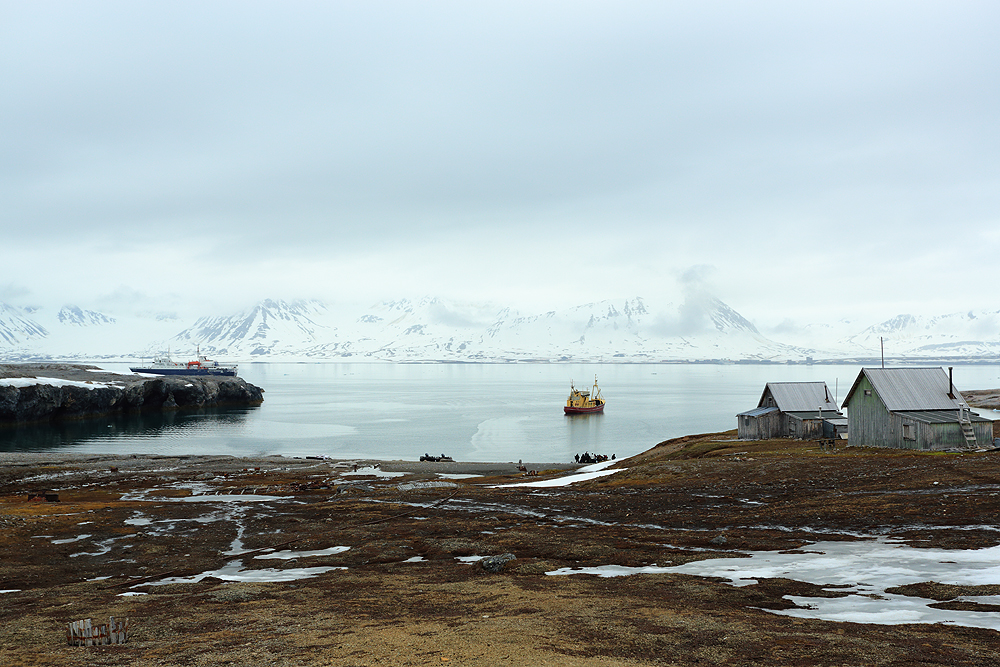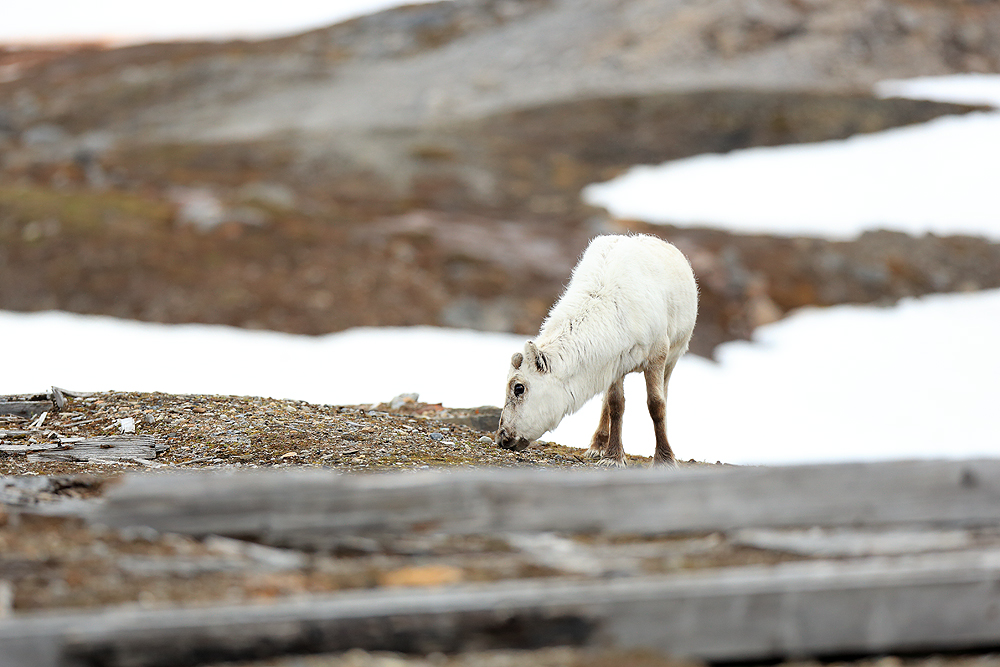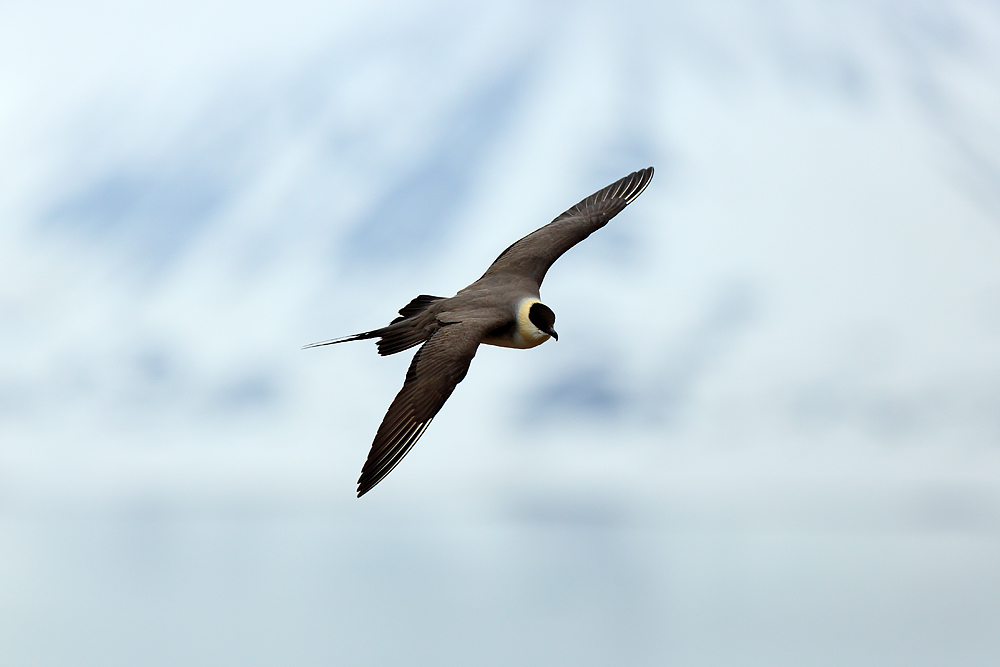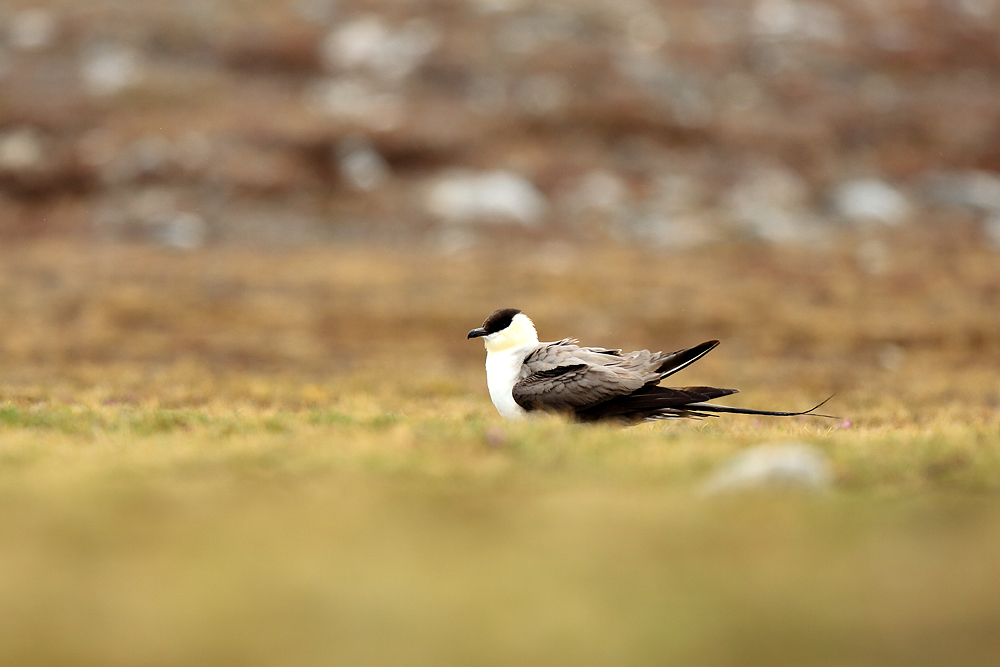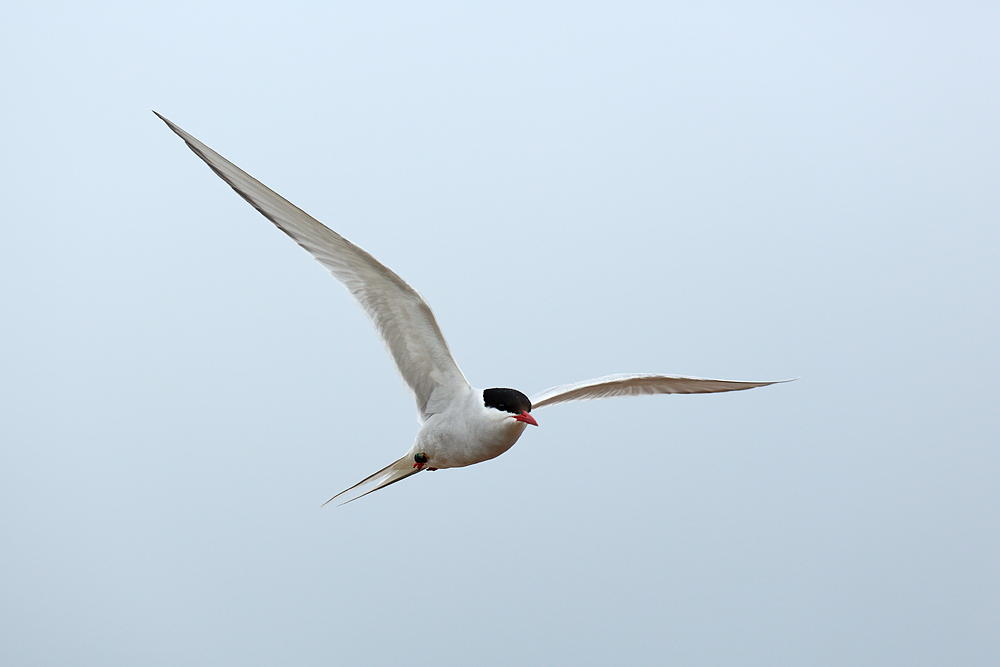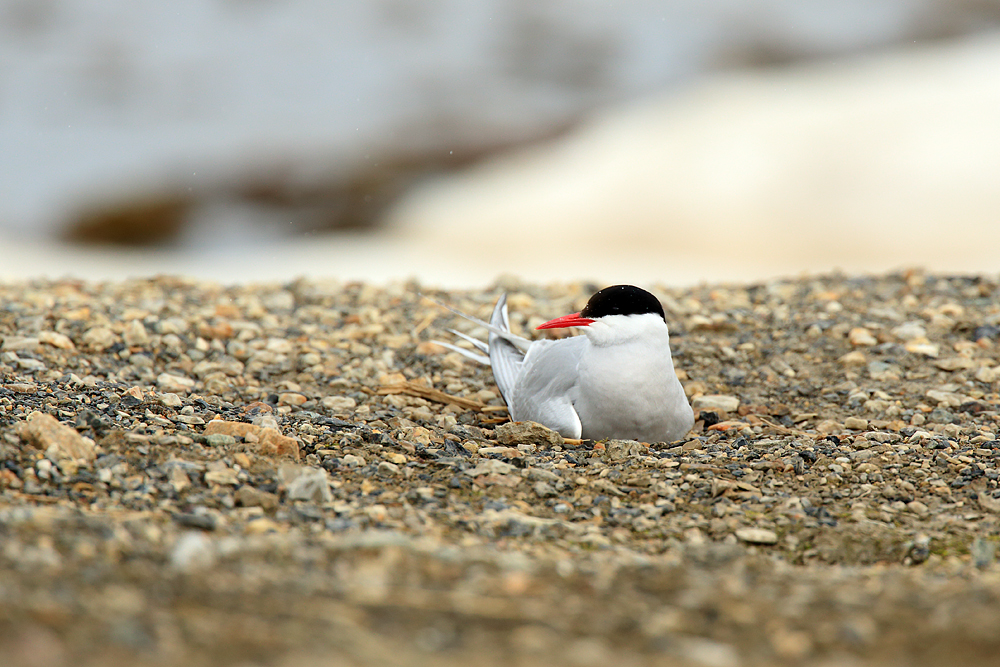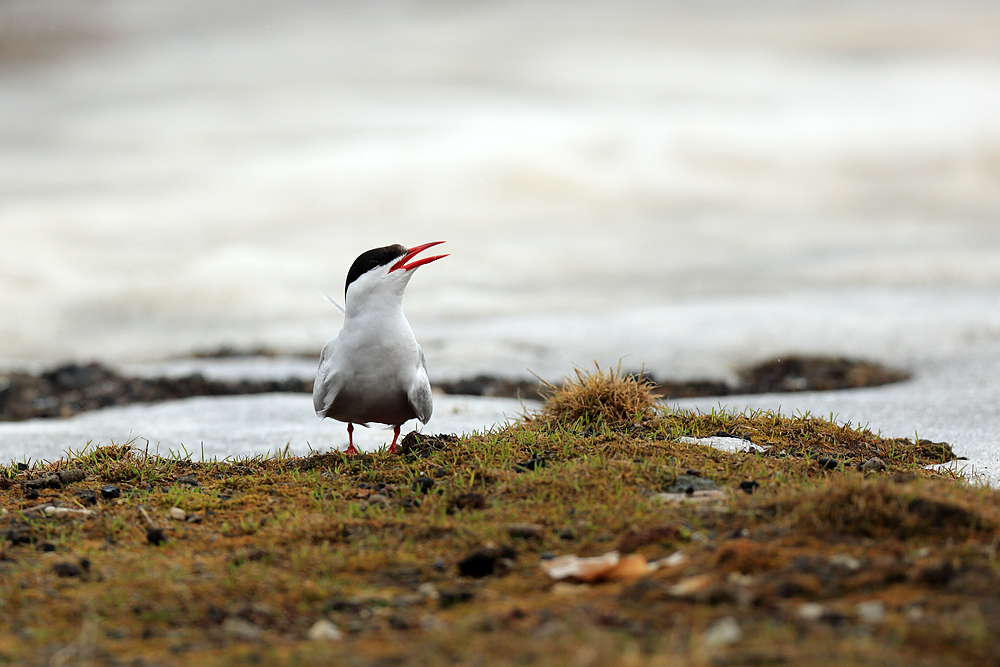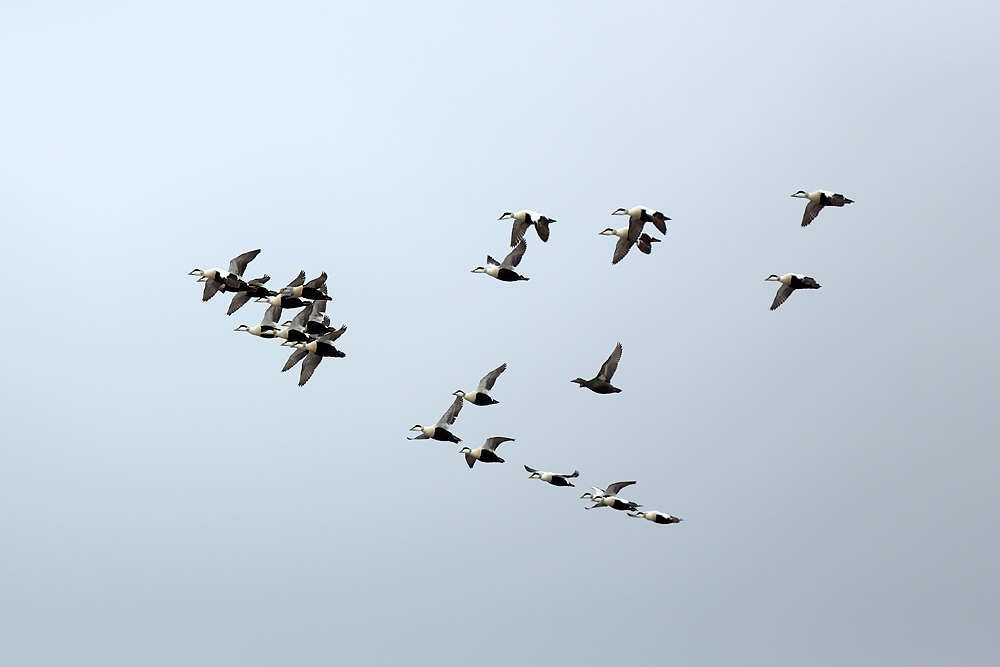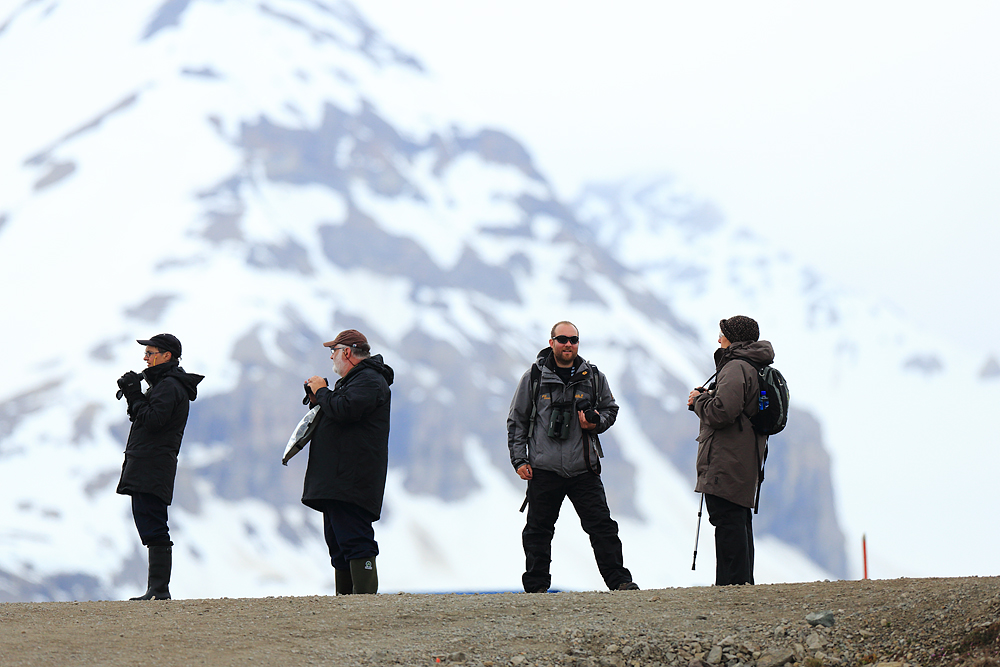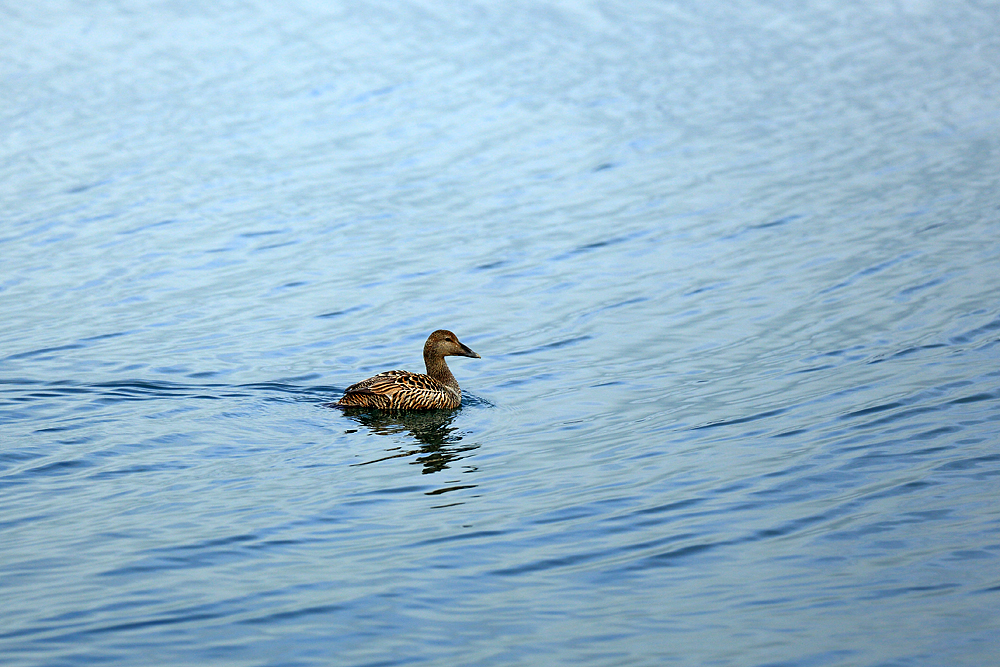|
Our last full day on our circumnavigation of this remarkable Arctic island was to be a beautiful one. The Sun shone down on us and a mist rolled in across the stunning glacial scenery. The fjord was called Bellsund at it was home to some amazing cultural history as well as the natural history. Below is a stark reminder as to why the islands were colonised in the first place ... sadly the Arctic was a superb hunting ground for whales and other blubber rich mammals. Belugas, the white whales, were killed in their thousands as were the now critically endangered Bowhead. Below you can see the carnage that the Europeans brought to this wild landscape. We also had a fantastic sighting of an Ivory Gull as it flew right past the group as we explored this old whaling outpost. After our morning landing we headed over to Ingeborgfjellet (as we were eating our lunch) and arrived to a beautiful big blue sky. We were hoping to find another colony of Little Auks as well as Reindeer. It was incredibly warm in the sun and I actually stripped down to my t-shirt ... it really was particularly mild. We never managed to get particularly close to the Little Auks but I had an amazing encounter with a small herd of Reindeer. So close I had to get the wide-angled lens out of my bag and make the most of the photographic opportunities. So another amazing day with what the Svalbard Archipelago has to offer. It is so incredibly hard to really do this amazing place justice with photography. The landscapes are utterly awe inspiring, the wildlife is remarkable and the freezing temperatures just help add to the feeling of a true wilderness ... and this really is wilderness, there is no escaping that.
Sadly this was my last full day in the Arctic Circle, the next day the M/V Ortelius docked in Longyearben and we flew back to Oslo, before flying back to Heathrow and heading back to the day job. Sub-Saharan Africa has always been that special place for me and nothing has ever quite compared ... until now! Perhaps, at long last, I have found another wilderness where I feel I could just keep on returning.
0 Comments
Our planned landing site for this morning was Kapp Waldburg, a site for nesting Kittiwakes in a steep sided canyon. As we arrived at our landing point we heard over the loud speaker that there was a Polar Bear and we would have to head elsewhere to stretch our legs. From there we headed on towards the tundra habitat at Sundneset, once again as we approached the landing site the Polar Bear call went out again. This bear was very relaxed and the expedition team decided it would be safe to land slightly further down the coast and have the ship keep an eye on the bear's where abouts. As we landed we were greeted by a truly wonderful site, a stunning pair of Grey (or Red) Phalaropes were feeding only yards away from us. The male was particularly obliging, carrying on with its feeding as if we didn't even exist, the female on the other hand seemed to be rather skittish and wasn't a particularly good poser. Unusually for the bird world the female Grey Phalarope is actually the more beautiful. The males take care of the eggs and ensure they hatch before raising the chicks, the female visits a multitude of males and lays her eggs with a few of them ensuring that they have the best chance of survival. As we left the two phalarope to their own devices we headed inland across the tundra and had an unexpected but truly wonderful encounter. A very shaggy Arctic Fox was heading towards us and we were blessed with extraordinarily close views. The fox had not yet lost all of its winter coat and spent a bit of time rolling around doing its best to free itself from its Arctic jumper. There were also a few Svalbard Reindeer within the vicinity but they were all a little nervous around us. After spending a couple of hours on shore and aware that there was still a Polar Bear within the vicinity it was time to head back down to the Zodiacs and transfer back to the Ortelius. As we reached the landing site we realised that the male Grey Phalarope was still feeding and happy to pose for the photographers in the group. After another incredible lunch we set sail for Dolerittneset, the ship anchored and we were once again out on the Zodiacs heading for shore. I joined the hiking group and we climbed up into the misty hills that towered above the water. We really didn't see much except for a few reindeer and a couple of ptarmigan and even Stein (our Norwegian guide) seemed to find the climb hard work. I am sure on another day the views could have been superb but on this day the visibility was less then 20 metres.
We eventually headed back down towards the ship and had a look at the multitude of Walrus bones that littered the shoreline. This was once a great Walrus haulout but unfortunately they were nearly hunted to extinction in this area. There were a couple of individuals on the shore but no longer were there the numbers that once thrived here. Once we were back aboard the ship, we headed for the southern most tip of Spitsbergen and up towards the stunning fjord of Hornsund. This took us all night and most of the next morning but what was in store in Hornsund was something none of us ever expected, it was a day that will stay with me until the day I die ... keep reading to find out what Hornsund had in store. Having had two Polar Bear sightings in as many days the morale was high among the group but sadly our planned excursion to find the Walrus haulout was a no go. It seemed that nobody was at home and so we moved on to the fhord at Faksevagen. Here we went off on our first proper walk to explore the Arctic Tundra. We set off with our Norwegian guide Stein and headed up the hillside into the slight mist. Stein was completely relaxed and didn't seem at all worried by the possibility of any bears. We spotted a few Reindeer here and there but they all seemed to keep their distance from us, suddenly we had company ... a Purple Sandpiper. The bird blended in superbly well with the tundra and you can see why they breed in this terrain. Then at long last the Reindeer came close enough for me to get a few shots, including the lovely male below which had a great set of antlers. As we walked along the edge of a shallow ridge line we suddenly saw a white animal appear within only a few yards of us. Your reaction says Polar Bear but luckily it was only another Reindeer, and luckily for me he posed nicely for a few photographs too. At the top of the ridge we had a sighting of the ship surrounded by an ice floe that had been at least half a kilometre away when we landed. It just goes to show how quickly the environment can change in this amazing landscape. We headed back to the ship for yet another filling lunch before we headed to the amazing breeding colony of Brunnich's Guillemots at Alkefjellet. We were told to dress warmly as we were going to be on the Zodiacs for at least a couple of hours and possibly more depending on the quality of the sightings. We went out onto the water in our Zodiacs and I had our Austrian guide Barbara (an expert on Glaciers). We made our way slowly towards the cliffs and at first there were just a few hundred birds on the tiny rocky outcrops, where each bird was incubating a solitary egg. However, as we made our way further along the cliffs, away from the ship the sky seemed to be filled with birds. The cliffs were towering above us, stained a mix of white and pink from the guillemots' droppings, and the birds were there in their thousands. The noise was quite amazing and it was an incredible spectacle which I feel truly honoured to have seen. We were desperate to see our first Arctic Fox at Alkefjellet and when we came to a grass covered scree slopes it was the best chance we would have. We scanned and we scanned but we just couldn't see any movement ... then Barbara spotted one, our first Arctic Fox. She was so excited and we were too, it was a long way off but it was an amazing sighting. We eventually decided to leave the fox alone and head back to the ship for the evening and yet another meal. Tonight we were heading to a fjord that has only be visited by a handful of vessels, even our expedition leader had never been there before. We were now really on a true Arctic expedition and heading into the unknown.
With our first night at sea, we were up bright and early for the first of many amazing breakfasts before a briefing on our first Zodiac excursion. This morning we were visiting an area where a historic British marble quarry once operated but is now favoured by Svalbard Reindeer and Long-tailed Skua. This was our first landing and so it was our first time venturing into Polar Bear territory. In fact, it turns out that anywhere on land is bear country as is anywhere at sea! We quickly spotted our first Svalbard Reindeer and we managed to get a few photographs in the gloom of the morning. As we walked across the tundra for the first time we saw plenty of Snow Bunting, our first Red-throated Diver, Long-tailed Duck, Purple Sandpiper, Brent Geese and the stunning Long-tailed Skua! We had a great introduction to the Arctic ecosystem in the morning with our visit to Ny London before having a superb lunch (in fact all the food throughout the trip was just "fantastic"). In the afternoon we would be visiting the northerly town of Ny Alesund where there are breeding Arctic Tern and sometimes some Arctic Foxes, the small settlement is primarily a research centre having originally been built for a coal mine but it is also home to the world's most northerly post office! It was the wildlife that was to feature and we had another yet another Zodiac transfer to the small dock and we were then free to wander (with a perimeter of armed guards around the settlement). A great day all round and a really educational first full day in the Arctic. We knew that tomorrow would be our first day in the "High Arctic" and we were all very excited indeed. Another night's worth of cruising and we would start to be in a really wild landscape!
|
AuthorBret Charman Archives
July 2024
Categories
All
|

